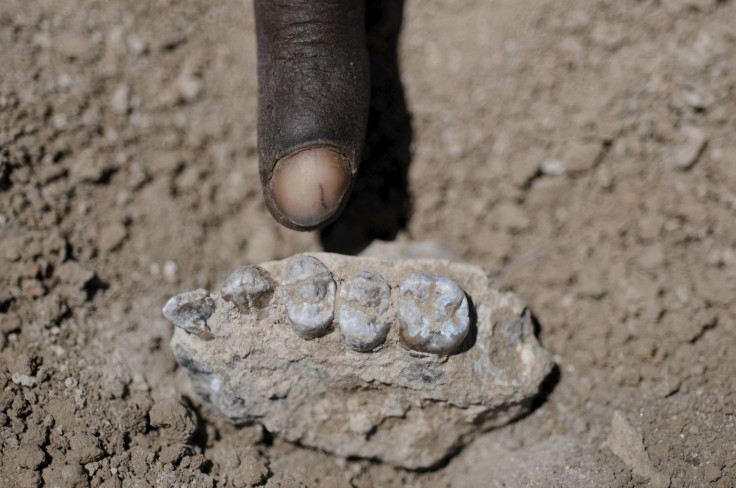Ethiopian Fossil Adds Another Branch To Human Family Tree

“Lucy” -- a female Australopithecus afarensis hominin estimated to have lived between 2.9 million and 3.8 million years ago -- may have lived alongside another human ancestor in Ethiopia. A recently unearthed hominin, Australopithecus deyiremeda, found in the Afar region of Ethiopia, adds a new species to our our family tree -- one that lived between 3.3 and 3.5 million years ago.
“The new species is the most conclusive evidence for the contemporaneous presence of more than one closely related early human ancestor species prior to 3 million years ago,” the Cleveland Museum of Natural History said in a statement released Wednesday. The discovery was made by an international team of scientists led by Yohannes Haile-Selassie -- a curator of physical anthropology at the U.S. museum.
The fossils were discovered less than 22 miles from where Lucy is believed to have lived. The researchers, who described their findings in a paper published Thursday in the journal Nature, think that in the past, the two could have lived in even closer proximity.
The discovery of this fossil evidence, which consists of bones from the upper and lower jaws, suggests that our family tree has more branches than previously believed and is far from linear. The age of the remains indicate that up to four different species of early humans might have been alive at the same time -- challenging a long-held belief that there was only one pre-human species at any given time between 3 million and 4 million years ago.

One or more of the species alive at the time was the “stem species” of modern humans -- Homo sapiens. Others, including as of yet undiscovered species, might have gone extinct without any descendents.
“This new species from Ethiopia takes the ongoing debate on early hominin diversity to another level,” Haile-Selassie said in the statement. “Some of our colleagues are going to be skeptical about this new species, which is not unusual. However, I think it is time that we look into the earlier phases of our evolution with an open mind and carefully examine the currently available fossil evidence.”
© Copyright IBTimes 2024. All rights reserved.






















